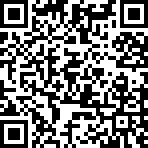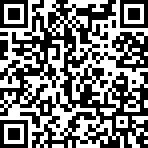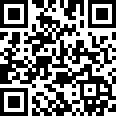Journey in Abusive Head Trauma: Perspectives
|
Abusive head trauma, often known as Shaken Baby Syndrome, is the most common cause of head injury in infancy. It is defined by the Centers for Disease Control in the US as “injury to the skull or intracranial contents of an infant or young child (< 5 years of age) due to inflicted blunt impact and/or violent shaking” (1). Every year, approximately 25 babies are admitted to NZ hospitals with abusive head trauma – almost one every two weeks. Our incidence is similar to the US (higher than Australia, Canada, and the United Kingdom), and may be increasing (2). In addition, both local and international evidence is clear that many more children are shaken or struck about the head than are ever diagnosed (2). In one study from the US which matched community surveys of parental behaviour with hospital admissions, it was estimated that 150 children were shaken for every child admitted (3).
Abusive head trauma is a significant cause of death and disability. Mortality is 15-20% (4-6), and 85% of survivors suffer serious permanent effects (7-8). The estimated average lifetime cost of care for a single child is $11.7 million New Zealand dollars (9-10), and the lives of many children and families are changed for ever (11). Primary Prevention of Abusive Head Trauma
By far the highest risk of abusive head trauma is in the first year of life (median age is 5 months), and one common trigger to harm is adult loss of control in response to a crying baby (12). Many countries have implemented primary prevention programmes aiming to reduce the incidence by educating parents and caregivers about the dangers of shaking, and by providing resources and support to assist caregivers to cope with a crying baby (13-22).
|
“Power to Protect” is our New Zealand primary prevention programme for abusive head trauma, based on best international evidence but adapted to local needs in a lengthy consultative process. A pilot study in Auckland in 2010 and 2011 showed that the programme is acceptable to both caregivers and health professionals (23). It has so far mostly been delivered in the first two months of life, by lead maternity carers and DHB-based healthcare providers.
Since 2011, there has been a single National Coordinator (based here in Puawaitahi, Auckland) to support the implementation of P2P in District Health Boards and community organisations across New Zealand who choose to implement it. The current National Co-ordinator is Sheila Fowlie (SheilaF@adhb.govt.nz).
At present, Power to Protect (P2P) promotes six key prevention messages.
However, audit data suggest that P2P messages are still only being delivered to a minority of those who care for newborn infants in New Zealand. We are now working with Hāpai Te Hauora, Safekids, Pasifika providers and representatives of groups who work with men, to enhance our ability to get effective prevention messages out there (especially where there is inequity of outcome for Māori), by helping ensure that our program and messaging is consistent with Te Tiriti obligations and reaches the right audience in the right way. If you have any questions about this enhancement project please contact the project manager Antonina Savelio (ADHB) AntoninaS@adhb.govt.nz
Since 2011, there has been a single National Coordinator (based here in Puawaitahi, Auckland) to support the implementation of P2P in District Health Boards and community organisations across New Zealand who choose to implement it. The current National Co-ordinator is Sheila Fowlie (SheilaF@adhb.govt.nz).
At present, Power to Protect (P2P) promotes six key prevention messages.
- It is normal for babies to cry, and it is normal for caregivers to get frustrated.
- It’s okay to walk away. Put baby in a safe place, close the door and take a break. Do not pick up the baby until you have calmed down.
- Never, ever shake a baby.
- Never leave baby alone with anyone who you think may lose control.
- Share this information with everyone who is looking after your baby
- If you ever think your baby has been injured, seek medical help at once
However, audit data suggest that P2P messages are still only being delivered to a minority of those who care for newborn infants in New Zealand. We are now working with Hāpai Te Hauora, Safekids, Pasifika providers and representatives of groups who work with men, to enhance our ability to get effective prevention messages out there (especially where there is inequity of outcome for Māori), by helping ensure that our program and messaging is consistent with Te Tiriti obligations and reaches the right audience in the right way. If you have any questions about this enhancement project please contact the project manager Antonina Savelio (ADHB) AntoninaS@adhb.govt.nz
|
References
Download the full citations for all the references cited here |
| ||||||
News and Resources
We will be using this website to provide news and resources about P2P, including links to a series of monthly webinars on matters related to abusive head trauma and its prevention, beginning in June 2023.
Further Information
For further information about the webinars or the existing programme, please contact the National Co-ordinator,
Sheila Fowlie, Powertoprotect@adhb.govt.nz
Sheila Fowlie, Powertoprotect@adhb.govt.nz




